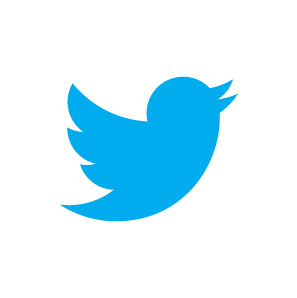Unfortunately, not all companies turn out profitable. While most businesses that fail to generate a profit and go under tend to be smaller, there are some quite large companies right now that seem to be on track to do just that. Perhaps the best examples are Twitter (TWTR +0.00%), Tesla Motors (TSLA 3.36%), and Groupon (GRPN 1.04%). The major question for Foolish investors is are any of these enterprises attractive prospects or will they continue to post losses in perpetuity?
Twitter's high-flying growth might not account for anything!
Over the past four years, Twitter has seen a tremendous rise in revenue, unfortunately for shareholders this stupendous revenue growth has not been matched with profits. Between 2010 and 2013, the social media giant saw its revenue jump 2,249% from $28.3 million to $664.9 million.

Source: Twitter
Twitter has seen nice growth in its data-licensing revenue over time. But the largest and fastest-growing component of its top line has been advertising, which comprised 89.4% of the business' sales in 2013, up from 85% a year earlier. This, like any social media site, has been driven by a greater number of monthly active users (MAU's), which jumped 346% from 54 million in 2010 to 241 million by year-end 2013.
At first glance, this increase in sales may seem like great news, but the fact that Twitter has yet to book an annual profit is disturbing. Over this four-year time frame, the company saw its net loss widen significantly from $67.3 million to $645.3 million.
Twitter revenue (annual) data by YCharts
The biggest reason for this increase in losses was the company's research and development expenses, which accounted for 89% of Twitter's revenue. Twitter's large R&D expenditures may look like management is investing as much as it can into the business' future; but when you consider that $379.9 million (or 64%) of the company's R&D expenses for the year was stock-based compensation, the prospect of future profits doesn't look good.

Source: Tesla Motors
Tesla's lack of profitability is anything but revolutionary
Between 2010 and 2013, Tesla saw its revenue rise an impressive 1,625% from $116.7 million to $2 billion. The main jump in sales for the company came between 2012 and 2013, when it managed to grow its top line by 387%. This was driven by sales of 22,477 Model S vehicles, up from the 2,650 it reported a year earlier.
In spite of this improvement, however, the company was unable to turn a profit. Over the past four years, Tesla's net loss narrowed from $154.3 million to $74 million. Even as revenue increased, management saw the cost of revenue associated with its automotive sales eat up most of its revenue. For 2013, this number came in at $1.5 billion and represented 76.7% of sales. Admittedly, this was better than the 89.9% of sales the company allocated to these expenses a year earlier, but it's still acting as a major inhibitor.
Tesla revenue (annual) data by YCharts
To make matters worse, there is the chance that the company, which champions the implementation of direct-to-consumer sales, may face additional challenges in expanding without the use of third-party dealers. Currently, five states have banned these sales, and New York has placed limitations on Tesla opening additional dealerships. Fortunately, on April 24, three Federal Trade Commission (FTC) officials voiced opposition to this "outdated" standard; but until the status quo is changed, Tesla will have difficulties growing in the way it wants to.
Source: Groupon
Sometimes penny-pinching doesn't pay off
The last company profiled here is Groupon, the online coupon and e-commerce giant. Over the past four years, the company has enjoyed massive revenue growth, increasing its top line by 723% from $312.9 million to $2.6 billion. As the company's core business of offering online deals provided by local merchants has matured, Groupon has diversified its business to include the sale of goods and even travel deals.
Despite this wildly successful growth, the company has had a hard time converting its higher sales into profits. Between 2010 and 2013, Groupon's net loss has narrowed from $389.6 million to $95.4 million. In part, this can be chalked up to the company's higher revenue, but management has also attributed its slightly better bottom line to declining costs. Chief among these was the company's selling, general, and administrative expenses, which fell from 156% of sales to 55%. Unfortunately however, the company has yet to turn a profit.
Foolish takeaway
Currently, Twitter, Tesla, and Groupon are three multi-billion dollar companies that have experienced tremendous top-line growth. While this is a positive development for shareholders, the fact that they have yet to reach a profit is cause for concern.
If the management teams of these respective businesses can turn the tide and begin creating shareholder value, the returns for the Foolish investor who jumps into the fray now could be significant. However, the very fact that each company seems unable to create that value while maintaining hefty valuations in the market suggests that the downside is huge if management continues down its current course.


